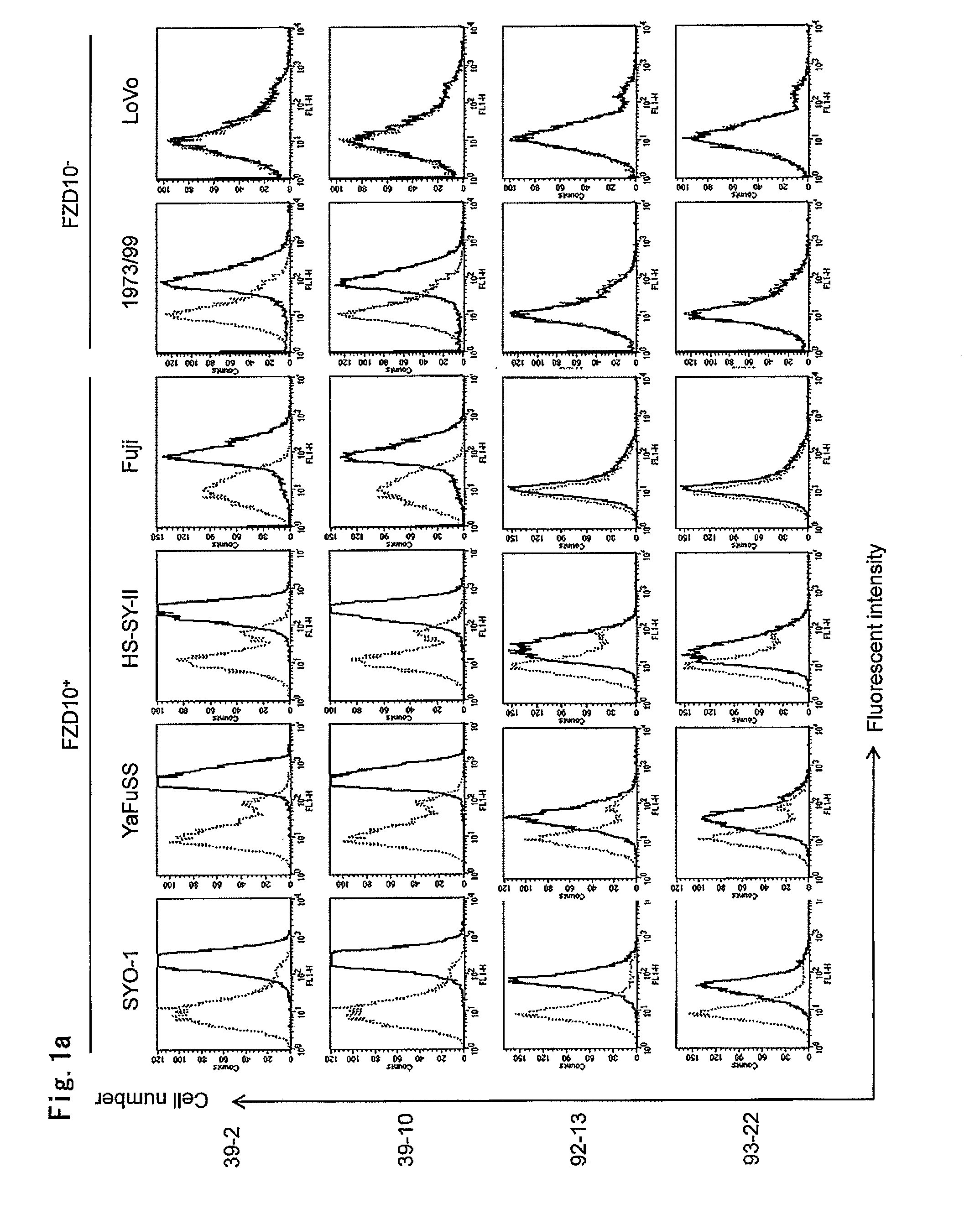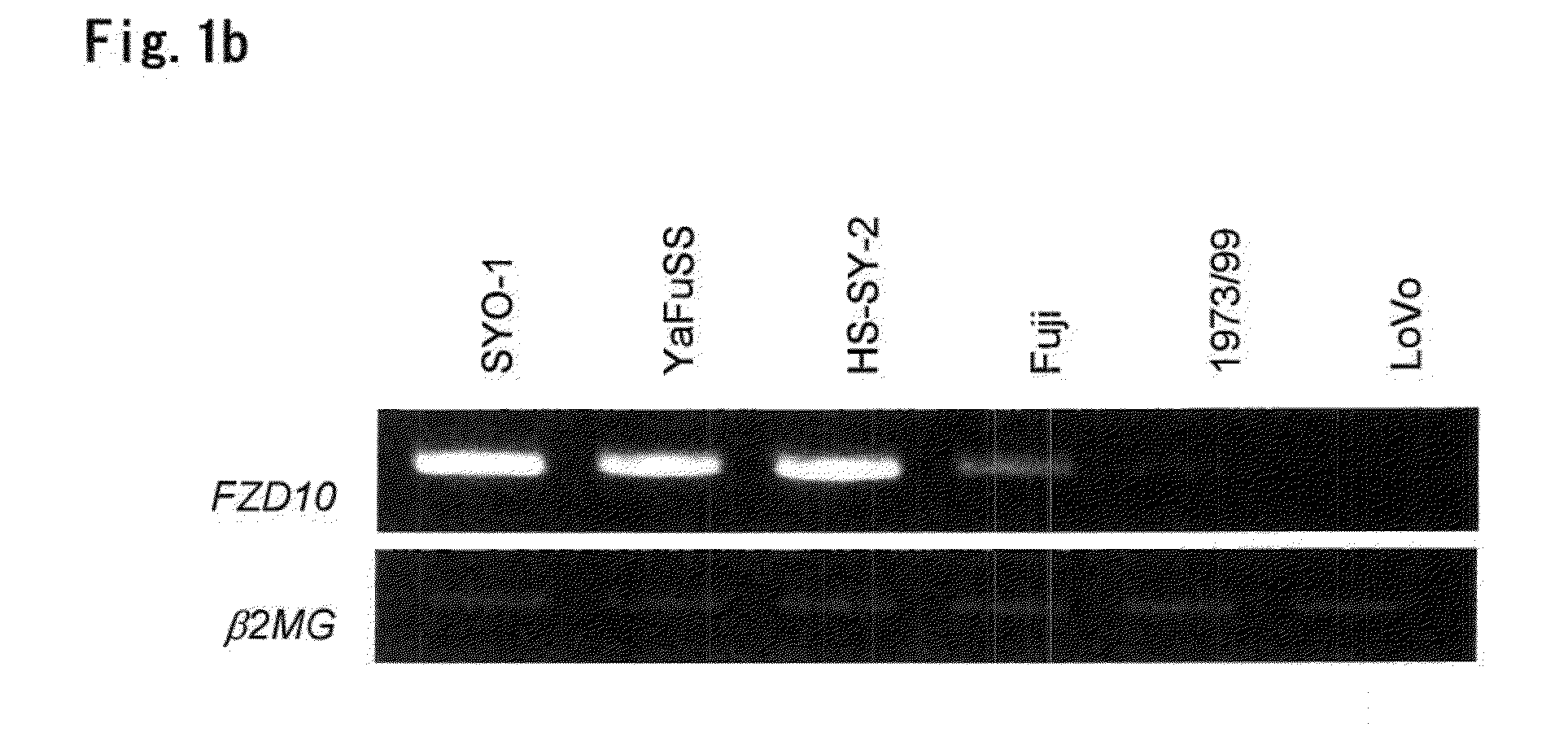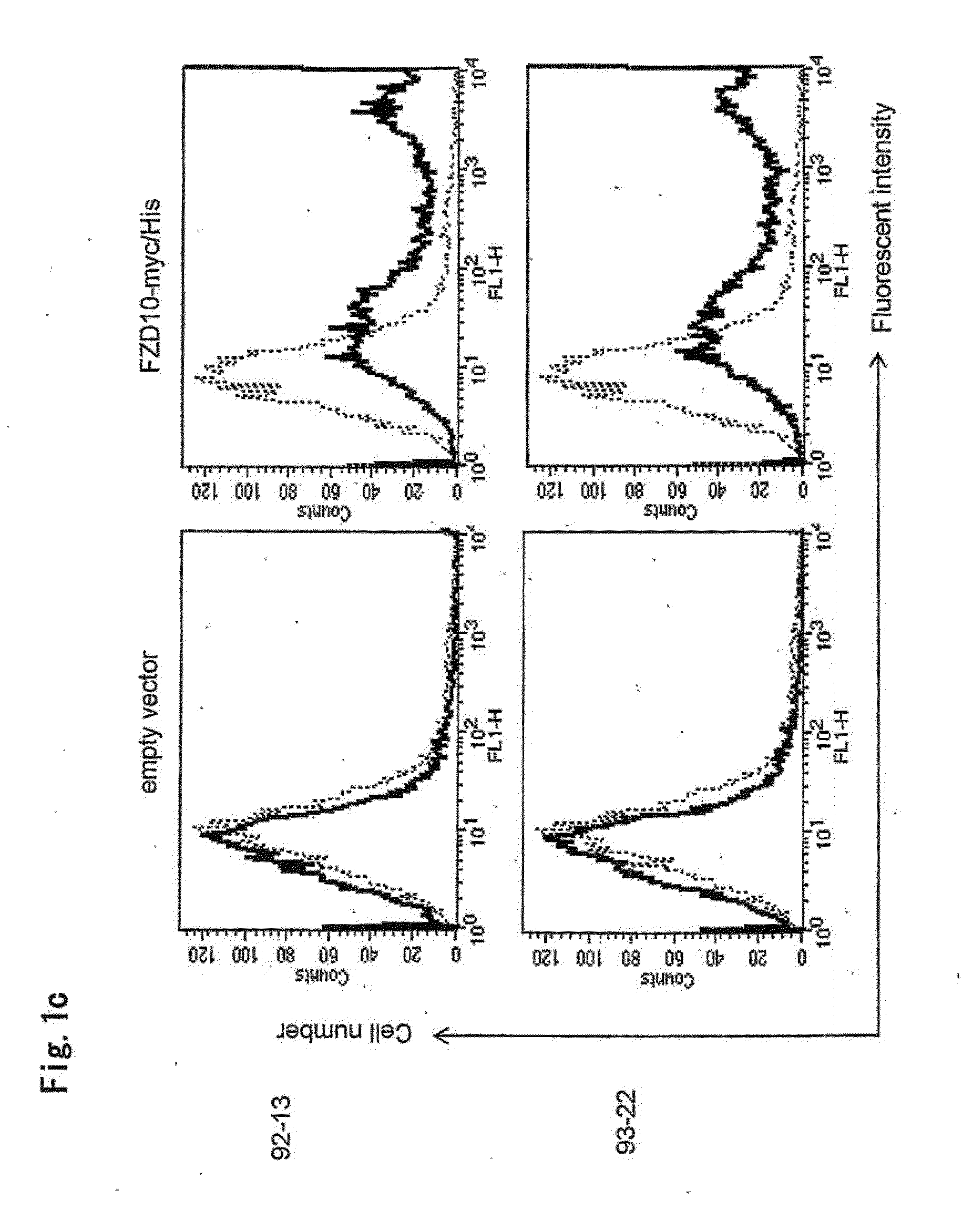Tumor-Targeting Monoclonal Antibodies to FZD10 and Uses Thereof
a monoclonal antibody and tumor-targeting technology, applied in the field of tumor-targeting monoclonal antibodies to fzd10, can solve the problems of poor prognosis of patients with cancer and no effective therapeutic drug available to those at an advanced stag
- Summary
- Abstract
- Description
- Claims
- Application Information
AI Technical Summary
Benefits of technology
Problems solved by technology
Method used
Image
Examples
example 1
Generation of Anti-FZD10 Monoclonal Antibodies
[0197](1) Generating Monoclonal Antibodies with Cell Immunization
[0198]Mouse anti-FZD10 monoclonal antibodies (Mabs) were generated by immunizing four weeks old female Balb / c mice in their foot pads with 2×107 COS-7 cells transfected with 2×107 of pCAGGS / neo-FZD10-myc / His (Medical and Biological Laboratories, Nagoya, Japan). Construction of pCAGGS / neo-FZD10-myc / His was reported previously (Nagayama, S., et al. (2005). Oncogene, 24, 6201-12) and this expresses the entire coding sequence of FZD10 cDNA and Myc and His epitope tags at its C terminus. The mice had been immunized with Freund complete adjuvant (Mitsubishi Kagaku Iatron, Inc., Tokyo, Japan) in one day prior to the cell immunization. Spleen cells from the immunized mice were harvested and fused with the myeloma cell line. The hybridomas were subcloned and assayed by Cell ELISA for the ability to secrete immunoglobulin that binds to the extracellular domain of FZD10 (amino acid re...
example 2
Binding Activities of Anti-FZD10 Monoclonal Antibodies
[0204]The present inventors applied two methods for evaluation of the binding affinity of mouse-monoclonal antibodies; flow cytometrical analysis with fluorescent dyes and radioactive measurement using 125I.
(1) Flow Cytometry (FACS) Analysis
[0205]To investigate the cell-binding affinities of the four antibodies, 39-2 and 39-10 (disclosed in WO2005 / 004912), 92-13 and 93-22, we performed flow cytometry (FACS) experiments. For flow cytometrical analysis with indirect fluorescence, suspensions of 5×106 cells were incubated with 10 μg / ml of Mabs or non-immunized mouse IgG (Beckman Coulter) for 30 min at 4° C. After washing with PBS, 2 μg of fluorescent goat anti-mouse IgG (Alexa Fluor 488, Molecular Probes, Eugene, Oreg.) was added, and the cell suspension was incubated for 30 min at 4° C. for analysis by FACScan (Becton Dickinson, Franklin Lakes, N.J.). For direct immunofluorescence assays, cells were incubated with 2 μg of Alexa488-...
example 3
[0213]To evaluate the binding specificity of 92-13 and 93-22 to human tissues, we performed immunohistochemical analysis using frozen tissue sections. Tissue sections of frozen normal adult human organs (BioChain, Hayward, Calif.) were fixed with 4% paraformaldehyde at 4° C. for 15 min, and incubated with 5 μg / ml Mabs for one hour at room temperature. Subsequently, mouse ENVISION Polymer Reagent (DAKO) was added and visualized with peroxidase substrate (3,3′-Diaminobenzidine Tetrahydrochloride).
[0214]The results are shown in FIG. 2. FIG. 2 shows immunohistochemical analyses in SS and normal human frozen tissue sections with no antibody (a, d, g, j, and m), 92-13 (b, e, h, k, and n) and 93-22 (c, f, i, l, and o). (a-c), synovial sarcoma; (d-f), kidney; (g-i), liver, (j-l), heart; (m-o), brain. Expectedly, we observed strong immunoreactivity to FZD10 in SS specimen (FIG. 2, a, b, and c) and placenta (data not shown), but did not detect in normal kidney, heart, brai...
PUM
 Login to View More
Login to View More Abstract
Description
Claims
Application Information
 Login to View More
Login to View More - R&D
- Intellectual Property
- Life Sciences
- Materials
- Tech Scout
- Unparalleled Data Quality
- Higher Quality Content
- 60% Fewer Hallucinations
Browse by: Latest US Patents, China's latest patents, Technical Efficacy Thesaurus, Application Domain, Technology Topic, Popular Technical Reports.
© 2025 PatSnap. All rights reserved.Legal|Privacy policy|Modern Slavery Act Transparency Statement|Sitemap|About US| Contact US: help@patsnap.com



